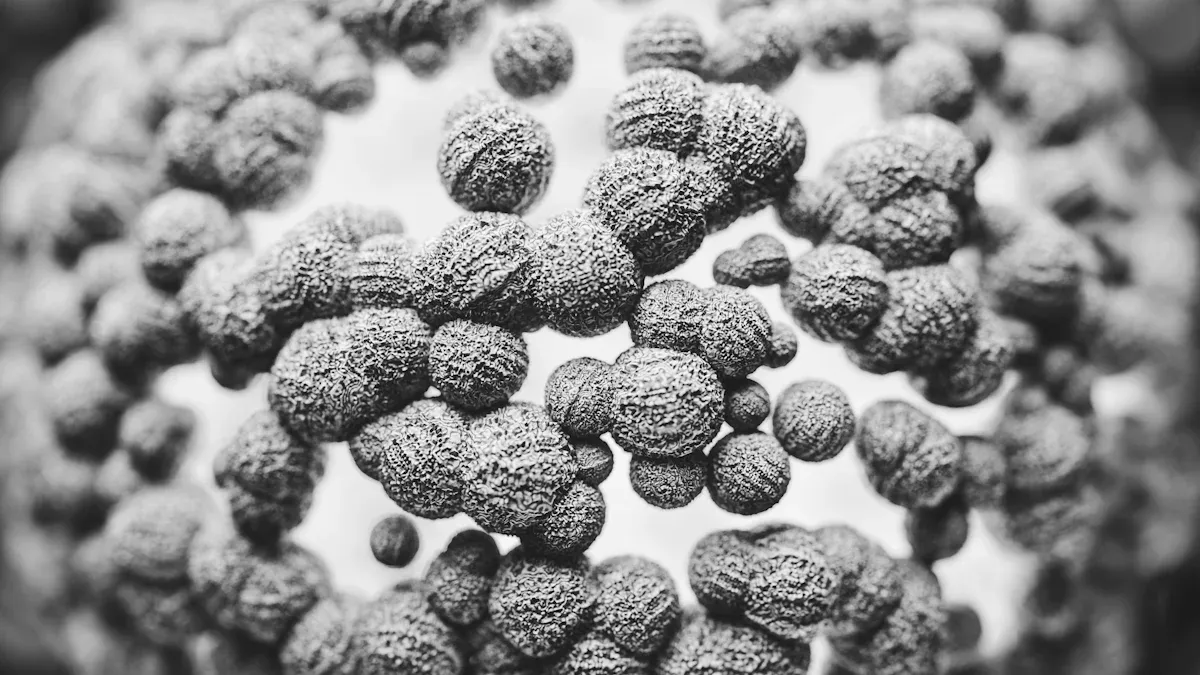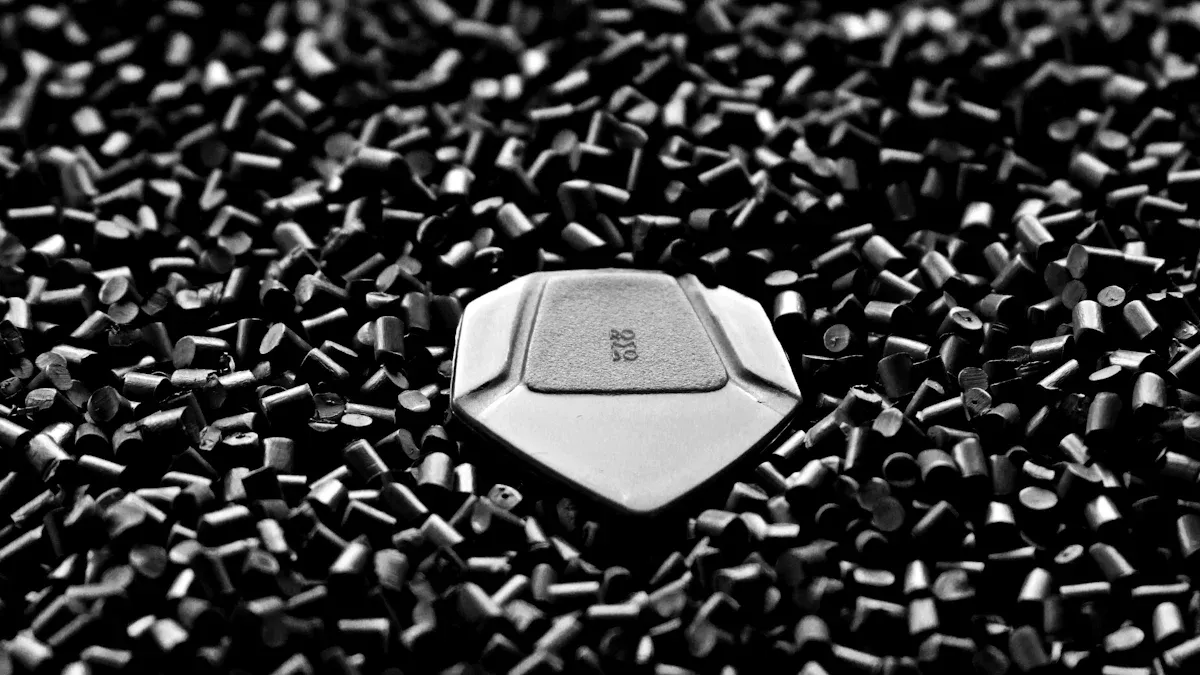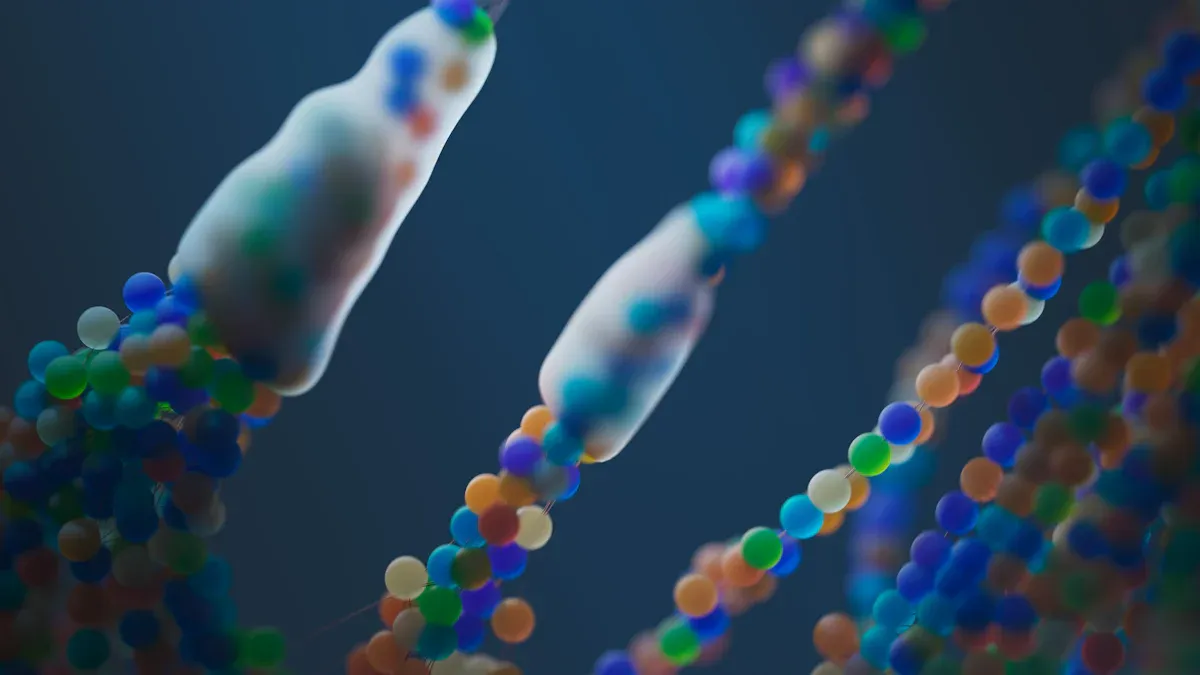
Nanotechnology has revolutionized the way mold coatings perform. By working at the nanoscale, these advanced coatings enhance the surface properties of molds, making them stronger and more efficient. For example, aerospace manufacturers report that alumina-titanium nanocoatings extend tool lifespans from 2,500 cycles to 8,000, reducing costs by 40%. Similarly, BMW uses nano TiAlN-coated molds to achieve 850,000 cycles, a 240% improvement over traditional molds. These innovations help you save time, reduce maintenance, and boost manufacturing precision. Nanotechnology in mold coatings ensures better durability and outstanding performance, making it a game-changer across industries.
Nanotechnology involves manipulating materials at the nanoscale, typically between 1 and 100 nanometers. At this scale, materials exhibit unique properties that differ from their bulk counterparts. When applied to mold coatings, nanotechnology enhances surface characteristics, making molds more efficient and durable. You can think of it as adding a microscopic armor to your molds, improving their performance without altering their dimensions. This innovation has become essential in industries like automotive, aerospace, and medical manufacturing, where precision and durability are critical.
Nanotechnology-based coatings offer a range of remarkable properties. These include hydrophobicity, anti-stick behavior, anti-static capabilities, and corrosion resistance. Their low friction coefficient, ranging from 0.050 to 0.130, reduces wear and tear on molds. The coatings are also incredibly thin, typically between 100 and 200 nanometers, ensuring they do not affect the mold's dimensional integrity.
| Feature | Description |
|---|---|
| Coating Thickness | Ranges from 100 nm to 200 nm, ensuring no impact on dimensional integrity. |
| Properties | Hydrophobic, anti-stick, anti-static, and anti-corrosion with low friction. |
| Benefits | Reduces surface tension, lowers molding pressures, and decreases scrap. |
| Application | Suitable for resins, rubber, and metals. |
| Environmental Impact | Non-toxic and cleanroom-friendly. |
These properties make nanotechnology in mold coatings a game-changer for improving manufacturing efficiency and reducing waste.
Nanotechnology enhances injection mold coatings by creating a semi-permanent barrier on mold surfaces. This barrier improves part release, especially for plastic and rubber components, without affecting their dimensions. For example, NanoMoldCoating® and NanoMoldRelease® form a hardened polymer film only 100-200 nanometers thick. This film facilitates smoother part ejection, reduces cycle times, and minimizes defects. Additionally, these coatings are compatible with secondary processes like painting and decorating, making them versatile for various applications.
| Feature | Description |
|---|---|
| Coating Type | NanoMoldCoating® and NanoMoldRelease® |
| Barrier Creation | Creates a semi-permanent barrier on mold surfaces |
| Part Release | Facilitates extraordinary plastic or rubber part release without affecting dimensions |
| Thickness | Non-toxic, colorless hardened polymer film, only 100-200 nanometers thick |
| Compatibility | Allows for secondary painting and decorating processes; suitable for cleanroom environments |
By adopting nanotechnology in mold coatings, you can achieve better performance, reduced maintenance, and higher productivity in your manufacturing processes.

Nanotechnology in mold coatings significantly extends the lifespan of your tools by enhancing wear resistance. These advanced coatings create a protective layer that withstands extreme conditions, such as high temperatures and friction, without degrading. For instance, nano coatings have an oxidation temperature of 1350°C, much higher than traditional TiAlN coatings. This allows your molds to perform efficiently even under intense heat.
The surface hardness of nano coatings, measured at 3600 Vickers, surpasses the 2800 Vickers of conventional coatings. This increased hardness reduces wear and tear, enabling you to use higher spindle speeds in hardened steel. You can achieve speed increases of 30 to 45 percent, which shortens cycle times while maintaining tool integrity. By reducing the frequency of replacements, these coatings save you time and money in the long run.
Nanotechnology-based coatings enhance the durability of your molds by providing superior resistance to damage. These coatings form a robust barrier that protects against scratches, corrosion, and chemical exposure. This means your molds can handle demanding manufacturing environments without compromising their performance.
The anti-corrosion properties of these coatings are particularly beneficial for molds used in industries like automotive and aerospace. They prevent rust and degradation, ensuring your molds remain in optimal condition for extended periods. Additionally, the coatings' hydrophobic and anti-stick properties reduce the risk of material buildup, further preserving the mold's surface.
Nanotechnology in mold coatings improves manufacturing efficiency by streamlining processes and reducing waste. These coatings enable smoother part release, which minimizes defects and lowers scrap rates. For injection mold coating applications, this translates to faster production cycles and higher-quality outputs.
Nanotechnology also contributes to the creation of stronger, lighter, and more durable products. For example, polymer nanotechnology enhances automotive tires, making them lighter and more fuel-efficient. In electronics, nano-coatings provide moisture and dust resistance, extending the lifespan of devices. These advancements not only improve product quality but also reduce energy consumption during manufacturing.
By adopting nanotechnology-based coatings, you can achieve a more efficient, cost-effective, and sustainable manufacturing process. The versatility of these coatings makes them suitable for a wide range of applications, from medical equipment to automotive components.
Nanotechnology in mold coatings offers significant cost savings by reducing maintenance needs and minimizing downtime. When you apply these advanced coatings, they create a durable protective layer that shields molds from wear, corrosion, and damage. This protection means your molds require less frequent repairs and replacements, saving you both time and money.
Consistent equipment maintenance often accounts for 10% to 15% of manufacturing costs. By using nanotechnology-based coatings, you can reduce this expense. These coatings enhance the durability of molds, allowing them to operate efficiently for longer periods without the need for constant upkeep. For example, a mold with a nanotechnology coating can withstand higher temperatures and friction, reducing the likelihood of breakdowns during production.
Downtime can be one of the most expensive challenges in manufacturing. Every minute your equipment is offline translates to lost productivity and revenue. Nanotechnology coatings help you avoid this by improving the reliability of your molds. With fewer interruptions, you can maintain a steady production flow and meet customer demands more effectively.
Additionally, these coatings improve product consistency and quality. When your molds perform optimally, they produce fewer defective parts. This reduces waste and eliminates the need for rework, further lowering your operational costs. Investing in nanotechnology not only saves money but also enhances customer satisfaction by delivering high-quality products on time.
By adopting nanotechnology in mold coatings, you can achieve long-term savings. The reduced need for maintenance, combined with improved efficiency and reliability, makes these coatings a smart investment for any manufacturing operation.

Preparing a mold for nanotechnology-based coatings is a crucial step to ensure optimal performance. The process begins with cleaning the mold surface to remove contaminants like grease, dust, or residues. These impurities can interfere with the adhesion of the coating, reducing its effectiveness. You can use ultrasonic cleaning with a mixture of ethanol and acetone to achieve a spotless surface. After cleaning, rinse the mold with deionized water and dry it using nitrogen flow. This ensures no moisture remains, which could compromise the coating's application.
Surface activation follows the cleaning process. Techniques like ozone etching or plasma treatment enhance the mold's surface energy, improving the bonding between the mold and the nanotechnology-based coating. This step is especially important for injection mold coating applications, where strong adhesion ensures durability under high-pressure conditions. Proper preparation not only extends the lifespan of the coating but also enhances the mold's performance during production.
Applying nanotechnology-based coatings involves a series of precise steps to achieve effective results. Each step contributes to the coating's performance and durability. Here's a step-by-step guide:
These steps ensure the coating forms a durable and uniform layer on the mold. For injection mold coating application, this process enhances the mold's ability to release parts smoothly and withstand high temperatures and pressures.
Curing is the final step in the application process, where the coating achieves its full strength and functionality. This step involves exposing the coated mold to controlled heat or UV light, depending on the coating material. The curing process solidifies the coating, creating a robust barrier that protects the mold from wear, corrosion, and damage.
For example, Atomic Armor coatings used in additive manufacturing demonstrate the importance of proper curing. These ultrathin nanocoatings improve the flowability of materials like Ti64 powder by 17%, enhancing their performance in high-temperature environments. Proper curing also prevents oxidation, ensuring the coating remains effective over time.
After curing, inspect the mold to ensure the coating has adhered evenly and shows no defects. A well-cured coating enhances injection mold coating application by improving part release, reducing cycle times, and minimizing defects. This step is essential for achieving consistent and reliable performance in manufacturing processes.
Tip: Always follow the manufacturer's guidelines for curing times and temperatures to maximize the coating's effectiveness.
Maintaining nanotechnology-based coatings starts with regular inspections. You should examine the mold surface for signs of wear, scratches, or discoloration. Early detection of issues helps you address them before they escalate. Cleaning the mold is equally important. Use non-abrasive cleaning agents to avoid damaging the coating. For instance, a mild detergent mixed with deionized water works well for removing dirt and residues. Avoid harsh chemicals, as they can degrade the coating's protective layer.
Ultrasonic cleaning is another effective method. It removes contaminants from hard-to-reach areas without harming the coating. After cleaning, dry the mold thoroughly using a nitrogen flow or a lint-free cloth. This prevents moisture from compromising the coating's integrity. Regular maintenance ensures your mold performs optimally and extends the lifespan of the coating.
Certain practices can harm nanotechnology-based coatings, reducing their effectiveness. For example, exposing the mold to excessive UV radiation can degrade the coating. UV rays cause oxidation, leading to yellowing and fragility. High moisture levels also pose a risk. They promote fungal growth, which can damage the coating and the mold surface.
| Evidence Type | Description |
|---|---|
| UV Radiation Effects | UV radiation degrades cellulose in coatings, causing yellowing and fragility. |
| Moisture Effects | High moisture promotes fungal growth, leading to coating degradation. |
| Recommended Practices | Avoid excessive UV exposure and maintain low moisture levels. |
To protect the coating, store molds in a controlled environment. Keep them away from direct sunlight and maintain low humidity levels. Avoid using abrasive tools or harsh chemicals during cleaning. These precautions help preserve the coating's performance and durability.
Reapplying nanotechnology-based coatings is essential for sustained performance. Over time, coatings may wear down due to repeated use and exposure to harsh conditions. You should monitor the mold's performance and reapply the coating when you notice reduced efficiency, such as difficulty in part release or increased defects.
Industry research suggests that some coatings require reapplication, while others do not. For example:
| Coating Type | Reapplication | Wear Resistance | Transfer Efficiency |
|---|---|---|---|
| A | No | High | Improved |
| B | Yes | Low | Decreased |
| C | Yes | Low | Decreased |
| D | No | High | Improved |
Follow the manufacturer's guidelines for reapplication schedules. The process typically involves cleaning the mold, applying the new coating, and curing it under controlled conditions. Regular reapplication ensures your mold continues to deliver high-quality results and minimizes downtime.
Nanotechnology in mold coatings offers transformative benefits for your manufacturing processes. It extends tool life, enhances durability, and reduces costs. These coatings improve mold performance by creating a protective layer that resists wear and damage. You can achieve better efficiency, fewer defects, and higher-quality outputs.
Adopting nanotechnology-based coatings ensures consistent performance in industrial applications. By investing in this innovation, you stay ahead in competitive markets while reducing downtime and maintenance needs. This technology is a game-changer for improving productivity and achieving long-term success.
Nanotechnology-based coatings offer superior wear resistance, durability, and efficiency. They create ultra-thin protective layers that withstand extreme conditions like high temperatures and friction. These coatings also reduce defects and improve part release, making them ideal for precision manufacturing.
Yes, nanotechnology coatings work on molds made from metals, resins, and rubber. Their versatility allows you to use them across industries like automotive, aerospace, and medical manufacturing. Proper preparation ensures strong adhesion and optimal performance.
The lifespan depends on usage and environmental conditions. With proper maintenance, these coatings can last significantly longer than traditional ones. Regular cleaning and inspections help preserve their effectiveness and delay reapplication.
Absolutely! Nanotechnology coatings are non-toxic and cleanroom-friendly. They resist contamination and maintain their integrity in sterile environments, making them suitable for medical and electronics manufacturing.
Some coatings need specialized tools like spin-coaters or plasma treatment devices for application. However, many manufacturers provide detailed guidelines to simplify the process. Following these instructions ensures effective results without requiring advanced equipment.